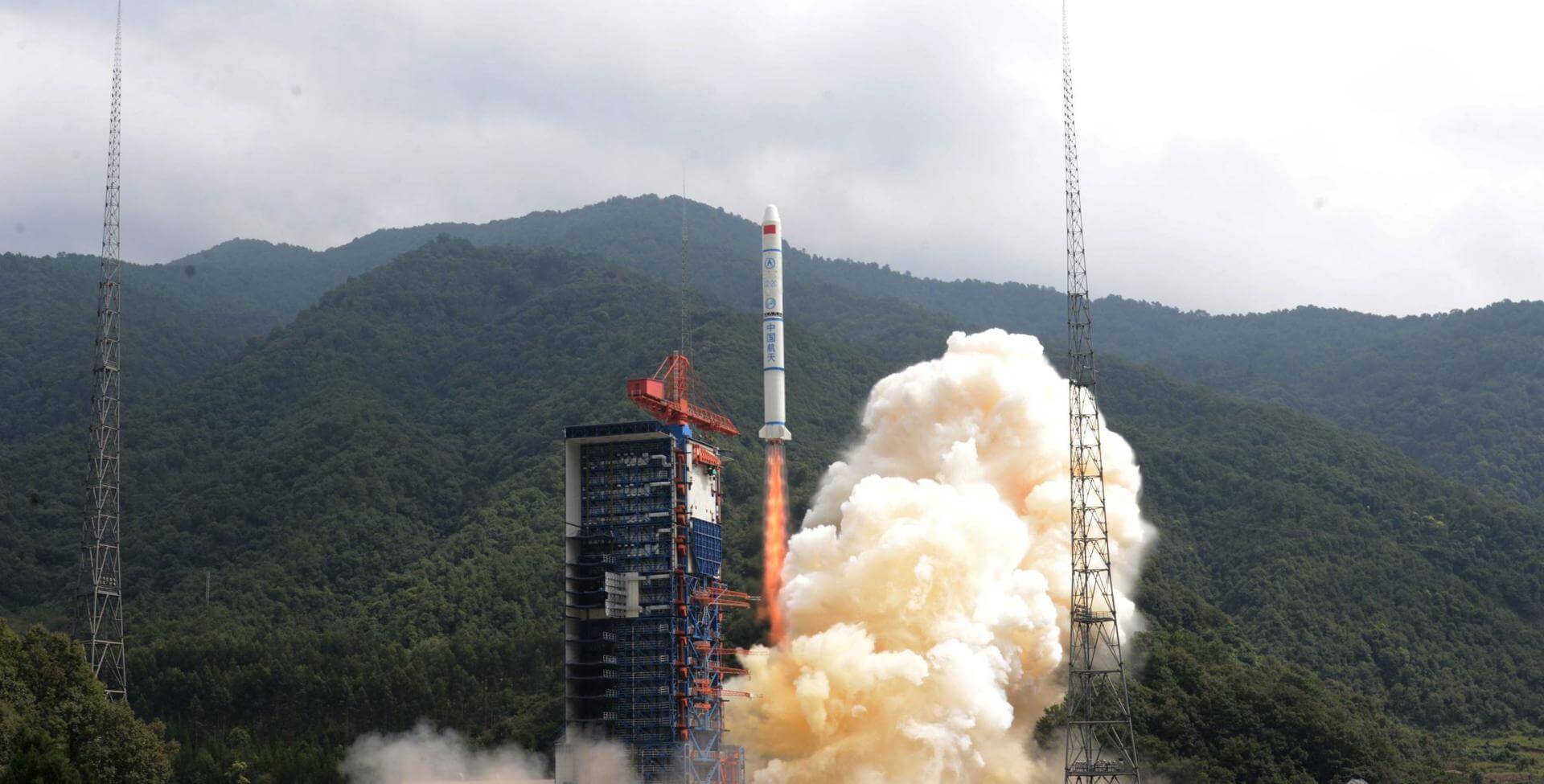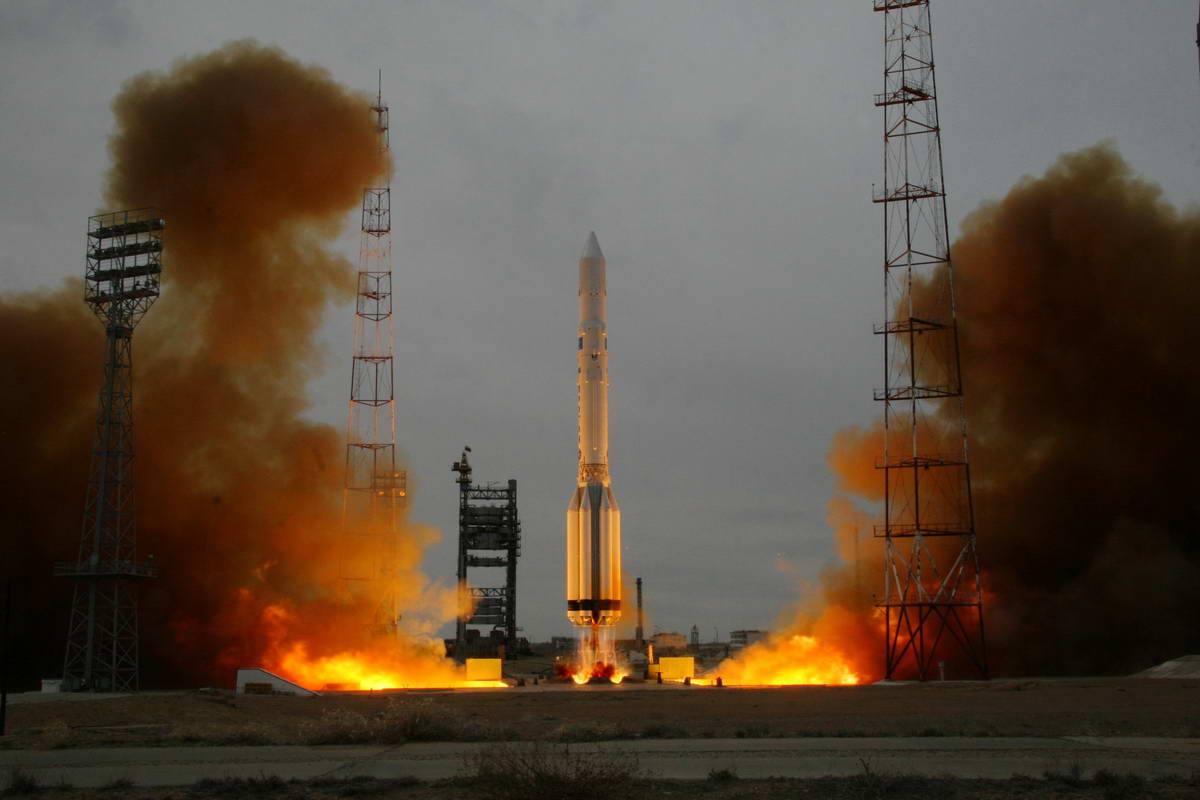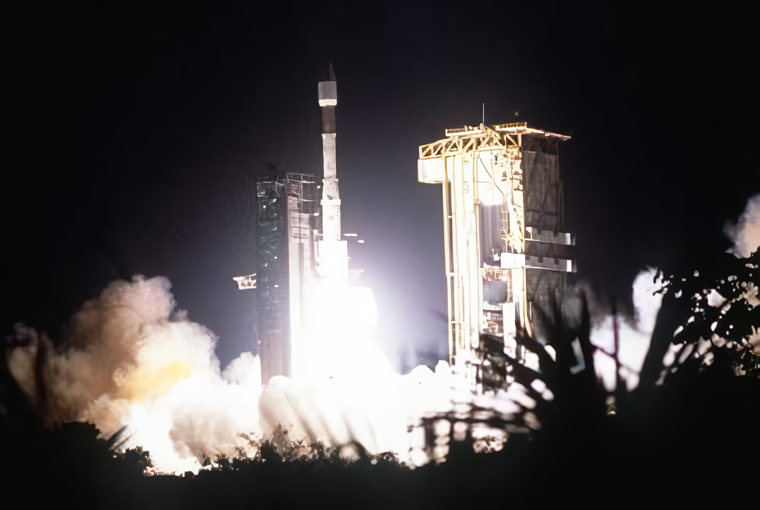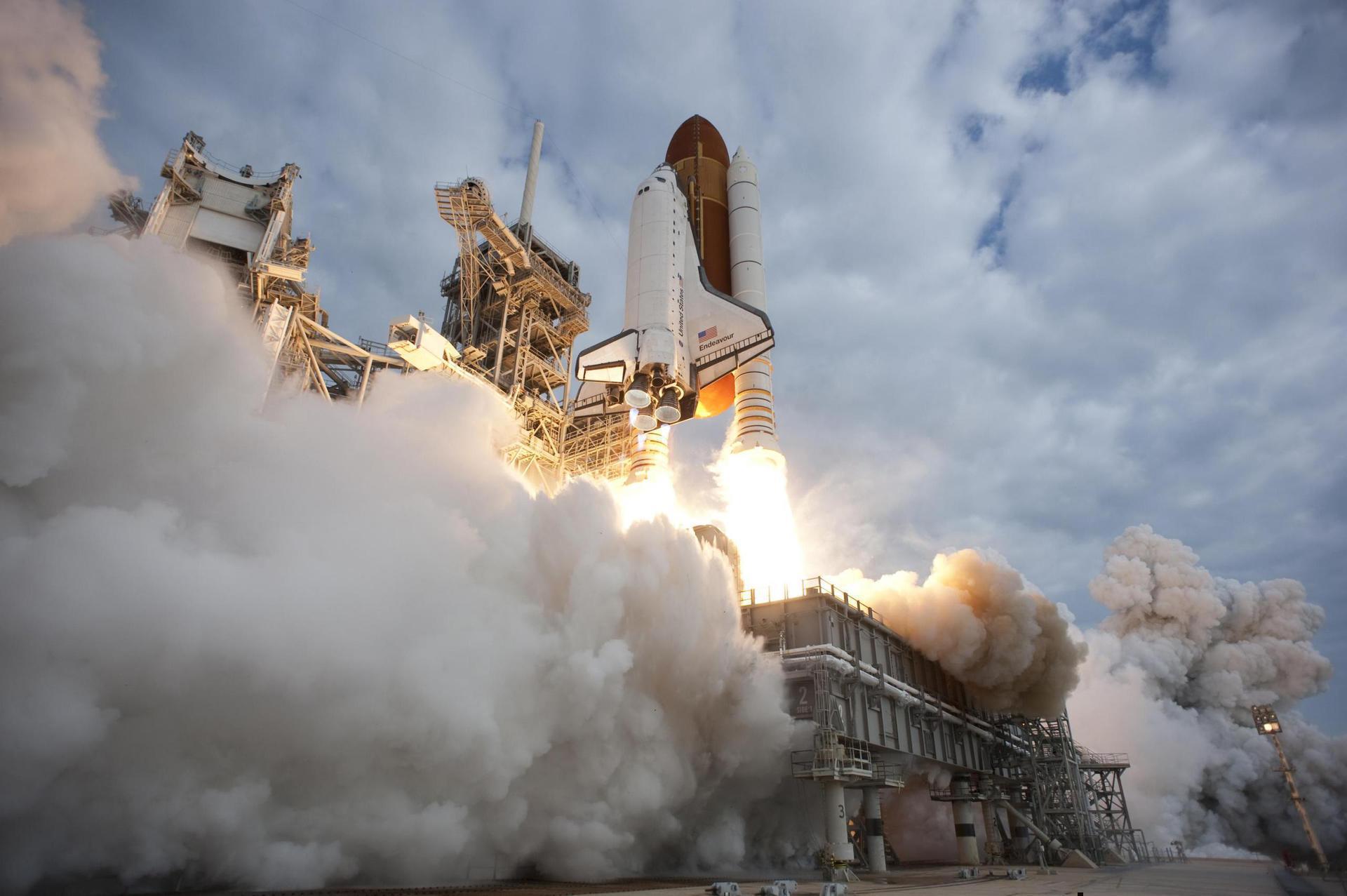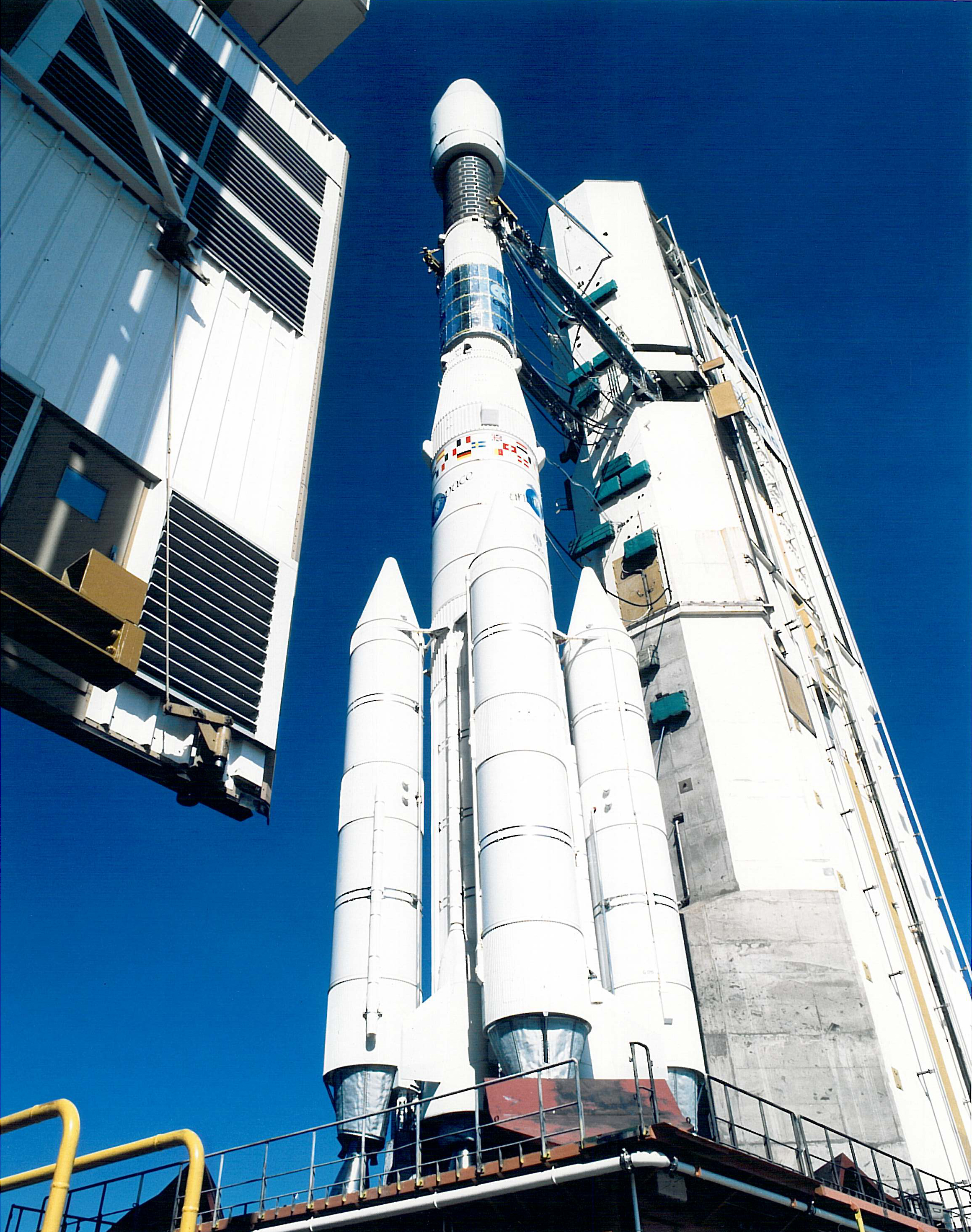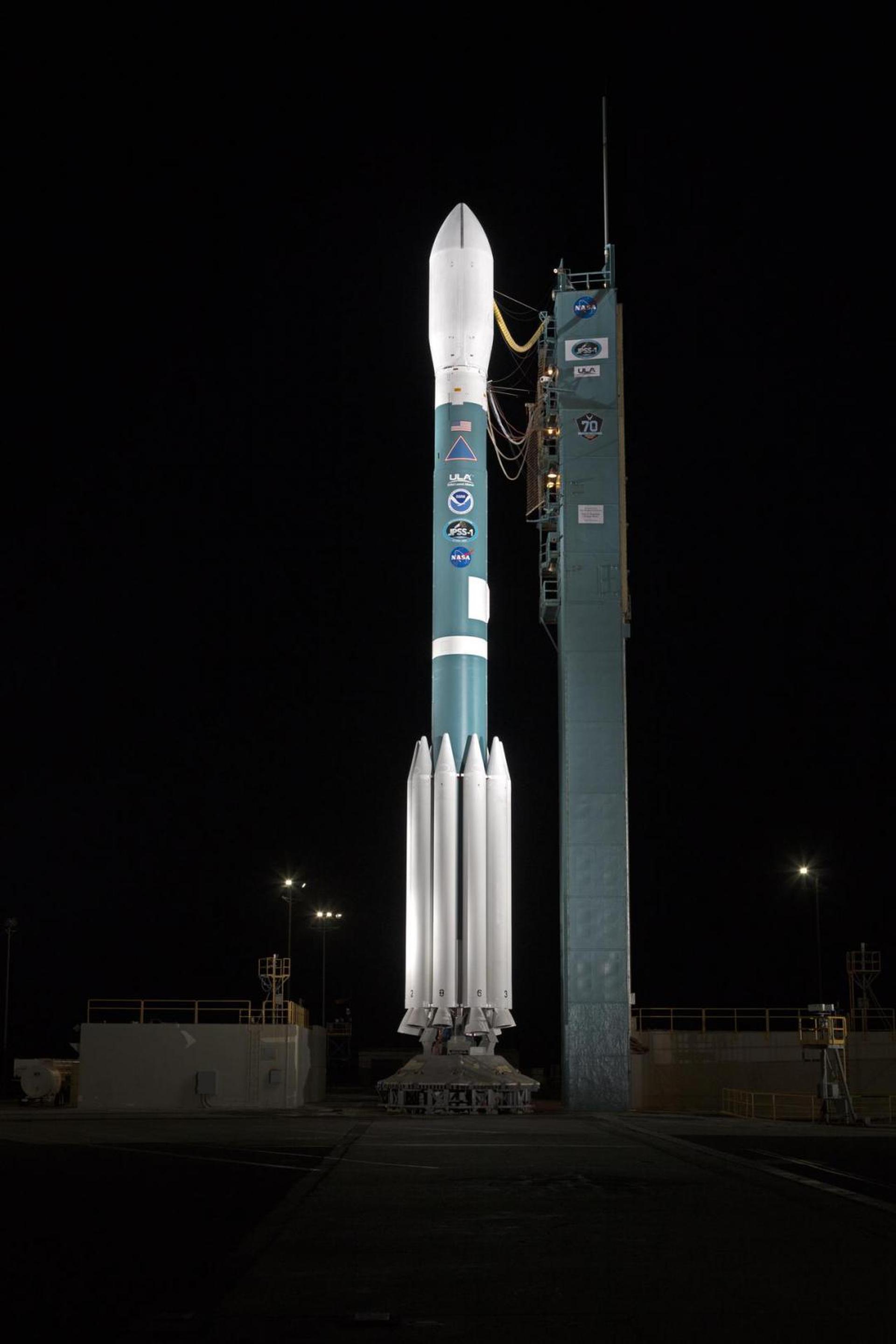Previous Spaceflight Launches
Filter by Agency, Locations or Vehicles
Show All LaunchesLong March 2C/SD | Iridium 42 & 44
China Aerospace Science and Technology Corporation | ChinaTaiyuan Satellite Launch Center, People's Republic of China
Dec. 8, 1997, 7:16 a.m.
Status: Launch Successful
Mission:
Iridium provides global mobile telecommunications services using a constellation of 66 low earth orbit satellites in a 86.4° inclined orbit. Although 77 satellites were originally envisioned for the system and spawned the name based on the 77th element in the periodic table, the system has been scaled back. Motorola's Satellite Communications Group designed and manufactured the Iridium satellites with Lockheed Martin providing the LM-700A spacecraft buses.
Low Earth OrbitProton-K/DM-2M | Astra 1G
Khrunichev State Research and Production Space Center | RussiaBaikonur Cosmodrome, Republic of Kazakhstan
Dec. 2, 1997, 11:10 p.m.
Ariane 44P | JCSAT 1B & Equator-S
Aérospatiale | FranceGuiana Space Centre, French Guiana
Dec. 2, 1997, 10:52 p.m.
H-II | TRMM & ETS 7
Mitsubishi Heavy Industries | JapanTanegashima Space Center, Japan
Nov. 27, 1997, 9:27 p.m.
Status: Launch Successful
Mission:
TRMM (Tropical Rainfall Measuring Mission) is the first space mission dedicated to quantitatively measuring tropical and subtropical rainfall which is one of the most important and least-known parameters affecting the global climate system. ETS-VII (Engineering Test Satellite, "Kiku 7") was launched aboard the H-2 No. 6 rocket from Tanegashima Space Center in November 1997.mETS-VII itself comprises two satellites: "Orihime" and "Hikoboshi". "Orihime" is a target satellite weighing approximately 400 kilograms. It is placed in a fixed circular orbit at an altitude of roughly 550 kilometers. "Hikoboshi" is a chaser satellite, weighing some 2.5 tons. It moves in a variable orbit to rendezvous and dock with "Orihime". "Hikoboshi" is equipped with a six-jointed, three-clawed robot arm two meters long.
Low Earth OrbitSpace Shuttle Columbia / OV-102 | STS-87
National Aeronautics and Space Administration | United States of AmericaKennedy Space Center, FL, USA
Nov. 19, 1997, 7:46 p.m.
Status: Launch Successful
Mission:
STS-87 was a Space Shuttle mission launched from Launch Complex 39B of the Kennedy Space Center on 19 November 1997. It was the 88th flight of the Space Shuttle, and the 24th flight of Columbia. The mission goals were to conduct experiments using the United States Microgravity Payload (USMP-4), conduct two EVAs, and to deploy the SPARTAN-201 experiment.
Low Earth OrbitSoyuz U | Resurs F-1M
Russian Federal Space Agency (ROSCOSMOS) | RussiaPlesetsk Cosmodrome, Russian Federation
Nov. 18, 1997, 11:14 a.m.
Ariane 44L | Sirius 2 & Indostar 1
Aérospatiale | FranceGuiana Space Centre, French Guiana
Nov. 12, 1997, 9:48 p.m.
Proton-K/DM-2M | Kupon
Khrunichev State Research and Production Space Center | RussiaBaikonur Cosmodrome, Republic of Kazakhstan
Nov. 12, 1997, 5 p.m.
Status: Launch Successful
Mission:
Kupon (K95K) was a communication satellite originally developed by Lavochkin for the third generation GKKRS (Global Space Command and Communications System). The project was cancelled with the breakup of the Soviet Union, and instead Kupon became the first communications satellite for the Russian banking system. The satellite was owned by the Russian Federation Central Bank (and possibly Global Information Systems of Moscow) and relayed financial data for the Bankir network.
Geostationary OrbitDelta II | Iridium 38 to 43
United Launch Alliance | United States of AmericaVandenberg SFB, CA, USA
Nov. 9, 1997, 1:34 a.m.
Status: Launch Successful
Mission:
Iridium provides global mobile telecommunications services using a constellation of 66 low earth orbit satellites in a 86.4° inclined orbit. Although 77 satellites were originally envisioned for the system and spawned the name based on the 77th element in the periodic table, the system has been scaled back. Motorola's Satellite Communications Group designed and manufactured the Iridium satellites with Lockheed Martin providing the LM-700A spacecraft buses.
Low Earth OrbitTitan 401A Centaur | NROL-4
Lockheed Martin | United States of AmericaCape Canaveral, FL, USA
Nov. 8, 1997, 2:05 a.m.
Status: Launch Successful
Mission:
Trumpet signal intelligence satellites were launched by Titan-4(01)A Centaur-T into highly elliptic Molniya-type orbits. In their elliptical orbits they would move very slowly over the northern hemisphere for most of their orbital period, allowing interception of microwave line-of-sight communications beams. Since they would move slowly through the beams during their orbit, a constellation of such satellites was required to monitor Soviet communications throughout the day.
Geostationary Orbit